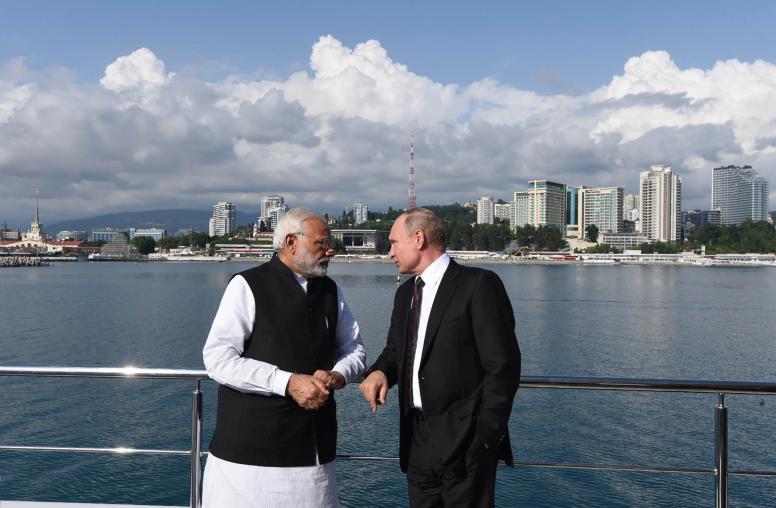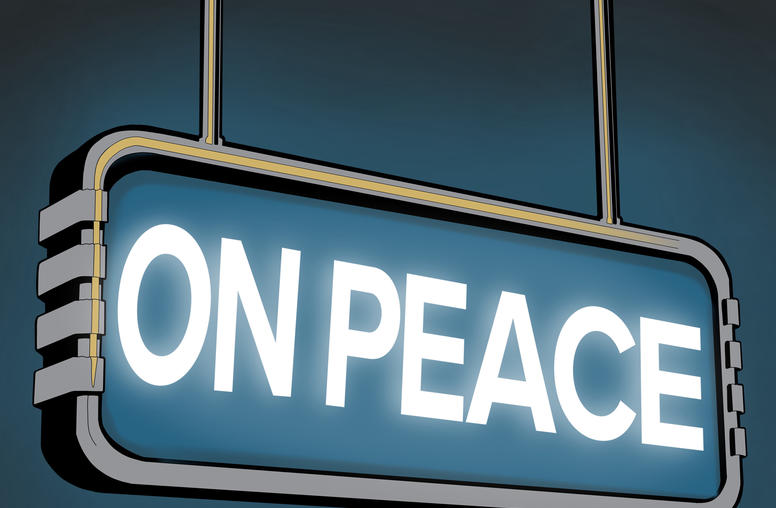A Fragile Ukraine Grain Deal Raises Cautions on Talks with Putin
Russia’s missile strike and lax verification weaken the effort to ease global grain shortages.
This week’s first exports of Ukrainian grain under a deal brokered by the United Nations and Turkey are a joyous headline for Ukraine and the many countries where the global surge in grain prices has caused food shortages. The deal could reduce prices if shipments accelerate, but it is vulnerable, as Russia signaled days ago by slamming missiles into Ukraine’s biggest seaport hours after formally agreeing to let that port ship its grain stocks. This fragile deal offers cautions for policymakers pondering eventual negotiations with Moscow to help end the Ukraine war and rebuild security in Europe.

On Hunger, Uncertain Hopes
The grain accord offers a “beacon of hope” for millions of people facing hunger, U.N. officials say. The first of 17 already loaded ships sailed from Odesa Monday with 26,000 metric tons of corn for Lebanon, where Syrian refugees are two-thirds of the 2.4 million people without secure food supplies. The needs are extreme in 20 “hunger hotspots” worldwide where the heightened food prices, COVID-related conditions and violent conflicts are pushing populations toward hunger or starvation. “An all-time high of up to 49 million people in 46 countries could now be at risk of falling into famine or famine-like conditions,” a recent U.N. report says.
The grain deal can’t solve problems of food transport and access in regions of starvation risk such as Afghanistan, Yemen, Ethiopia and Syria. But it could reduce grain prices — and provide Ukraine with vital revenues — if shipments could be accelerated to export some 20 million metric tons of grain the country has been unable to export because of Russia’s invasion. Releasing that stockpile would mean shipping 167,000 metric tons daily over the deal’s 120-day term (which in principle can be renewed). As the effort ramps up, the first 10 percent of that period has yielded just the 26,000 tons, far short of the 2-million-ton pace needed to hit the target.
Also, the accord could be disrupted anytime. The massive grain carriers will plod from Odesa and two other Ukrainian ports through Ukrainian minefields and Russia’s naval blockade of Ukraine’s Black Sea coast, making easy targets for an unidentifiable missile, torpedo or sea mine. An unexplained explosion that cripples a ship and kills sailors could collapse the deal by making make it impossible to find insurers and carriers for the shipments.
Needed: Verification Measures
“Any agreement is risky if we don’t have robust methods to verify compliance by both sides,” noted Juan Diaz-Prinz, a USIP specialist on peace processes and mediation. “This arrangement for grain exports includes verification of Ukraine’s commitment,” as ships passing through Russia’s blockade must be inspected for weapons or materiel not permitted under the deal, Diaz-Prinz said. “But there is no mechanism to verify or enforce Russia’s commitment” not to interfere with ship movements.
Russian President Vladimir Putin signed the accord to maintain political support or neutrality by scores of countries that have abstained from condemning or sanctioning his five-month-old war on Ukraine. “Russia’s allies in the Middle East, such as Syria and Iran, were pressing him to end Russia’s blockade of Ukrainian grain exports, which has made it difficult for them to feed their people,” said USIP Russia specialist Don Jensen. Russia signed the deal July 22, just after Putin discussed grain prices in Tehran — and as he sent Foreign Minister Sergei Lavrov around Africa to reassure governments of Moscow’s commitment to lower prices. A bonus for Russia in the deal was ancillary U.N. and European commitments to ease Russia’s own exports of grain and fertilizers.
Yet the absent verification measures leave Putin little to lose from actions that indirectly or covertly undermine the deal’s implementation, noted Diaz-Prinz. Russia’s July 23 cruise missile attack was such an act. While Ukraine intercepted two missiles, two others damaged Odesa’s port infrastructure. The strike amplified the fears of shippers and insurers and again increased grain prices in global markets.
The grain deal could have been strengthened by some form of ratification in the U.N. Security Council, said Diaz-Prinz. That step would have required Russia and China (whose support on Ukraine Russia values highly) to more publicly invest their reputations in the deal’s successful implementation. Indeed, the deal might have tried enlisting China to monitor its implementation in the Black Sea, creating a significant disincentive for Russia to covertly interfere with shipments.
Putin’s ‘Messaging-By-Missile’
Russia’s July 23 strike and subsequent attacks on Odesa can inform the discussion among U.S. and European policymakers about how governments might consider negotiating with Moscow on larger issues. That discussion so far has yielded a broad consensus to let Ukraine, bearing the bloodshed in this fight, decide whether to consider talks. President Volodymyr Zelenskyy has said this can happen once Russian forces are pushed back at least to the lines they held before their February 24 launch of all-out war. Analysts have noted the extremely high stakes this establishes for the military battle over the next 15 weeks or so. Putin clearly expects freezing weather and energy shortages to help him beat down Ukraine’s heroic resistance and Europeans’ support for it.
Broadly, Putin’s messaging-by-missile reinforces the reality that, while diplomacy and peacebuilding favor negotiation as a process among partners who offer a measure of good will to reduce or end a conflict, any talks with Putin would be something different. Assessments of Putin over years — by his biographers, Russia scholars and former U.S. secretaries of state — underscore his defensiveness and suspicion of foes, which have sharpened over his 22 years of increasingly authoritarian rule. “Peace talks are just one more element of Putin’s concept of multi-dimensional warfare,” said Jensen, alongside conventional military assault, political subversion, disinformation, cybercrime or natural gas cutoffs.
Attacking Odesa’s port the day after agreeing to let it export grain was Putin’s signal of power and contempt toward his negotiating counterparts. Partly, it aims to show them the limits of what they have achieved: While he has signed the deal, he will extract every further concession possible as the price for implementing it. To Russian domestic audiences, the attack “corrects” any misimpression that Putin’s negotiation was a sign of weakness. These acts of contempt and humiliation — always just indirect enough to profess an innocent denial — are Putin’s pattern. A recent example was Putin’s April 26 meeting in Moscow with the United Nations’ Guterres, followed 48 hours later by his missile strike on Kyiv as Guterres wound up meetings in the city with Ukraine’s President Zelenskyy.
Leave Nothing to Chance
A broad consensus of policymakers and public opinion among Americans and in NATO states has supported Ukraine’s self-defense, and sanctions against Russia’s aggression, as essential to protecting European security, democracy and the international rule of law. A full strategy for those aims requires preparation now for any eventual negotiations with Putin. It also means speeding support for Ukraine, in these critical weeks before winter, for the counteroffensive that Zelenskyy hopes will force Russian troops back toward their nation’s borders.
We cannot know what conditions might frame any eventual negotiation with Putin to buttress Ukrainian and European security — whether a successful Ukrainian military campaign, a years’-long war of attrition that exhausts both countries, or something else. But recent events underscore that, whenever broad diplomacy with Moscow might resume, “we cannot leave anything to chance,” said Diaz-Prinz. Putin’s patterns amid conflict show that “in negotiations we can’t trust Russia, so we have to make sure we have negotiated all the details of any agreement and ensured verification.” In interviews compiled this spring by Boston-based universities’ Program on Negotiation, five former secretaries of state who negotiated with Putin also stressed the need for painstaking preparation of any talks with him.
To negotiate with a counterpart we can’t trust, we need first to establish working relations through confidence-building measures. The current grain deal is ill-placed for that role, Diaz-Prinz says, not only because of its weak verification measures, but because “humanitarian action” such as ensuring food supplies “should be a given,” rather than a tool to extract concessions from an opponent. Should wider negotiations become possible to resolve the Ukraine war and rebuild European security, Putin will act based on his estimate of the balance of power between him and opponents, Diaz-Prinz says. Any agreement thus will need strong verification mechanisms that can impose clear consequences for violations of any deal — unlike the Minsk accords during Russia’s recent years of proxy war in Ukraine’s Donbas region.



